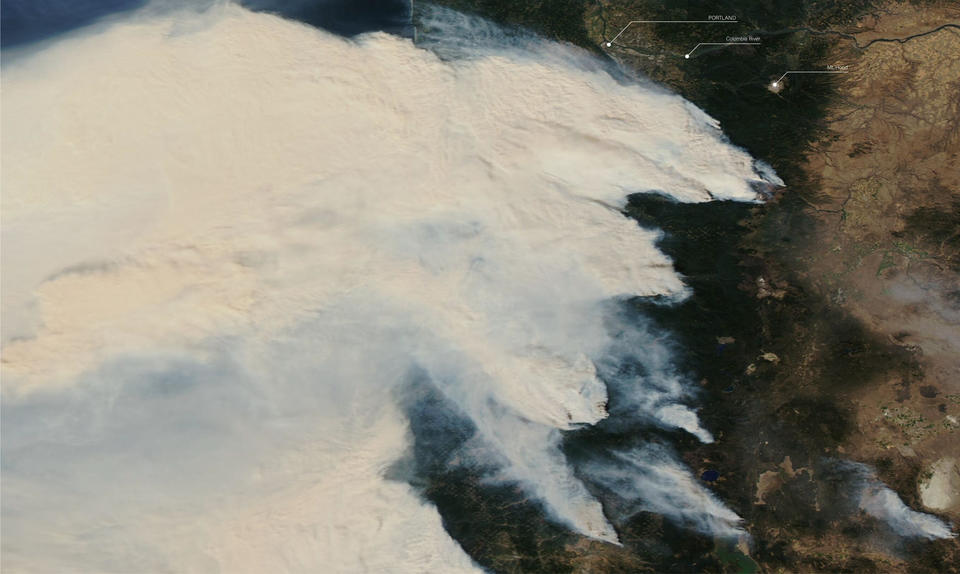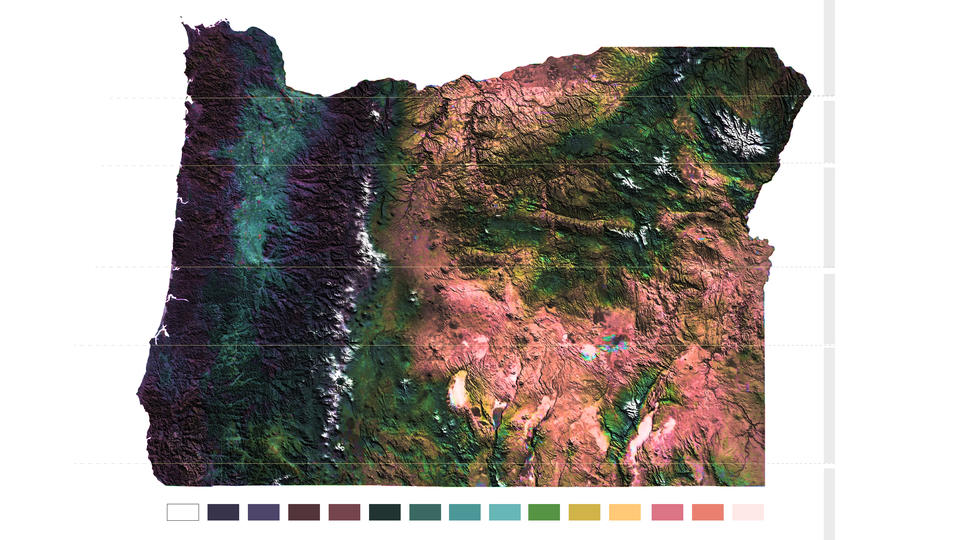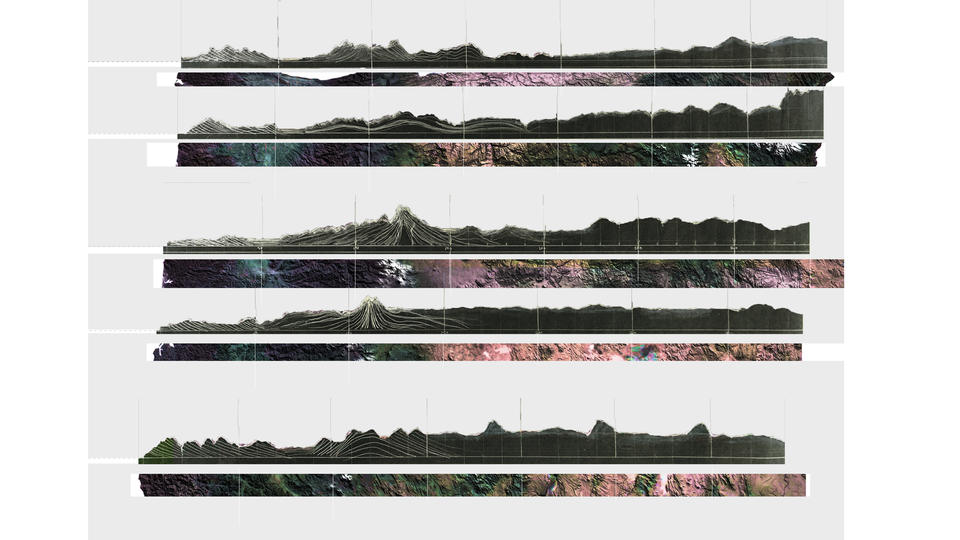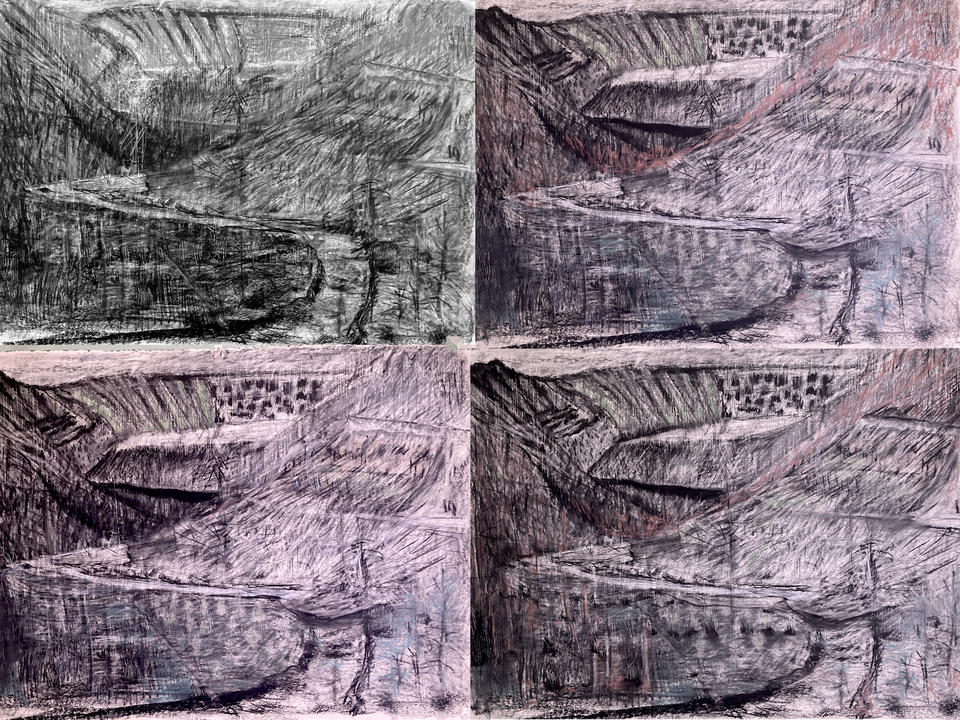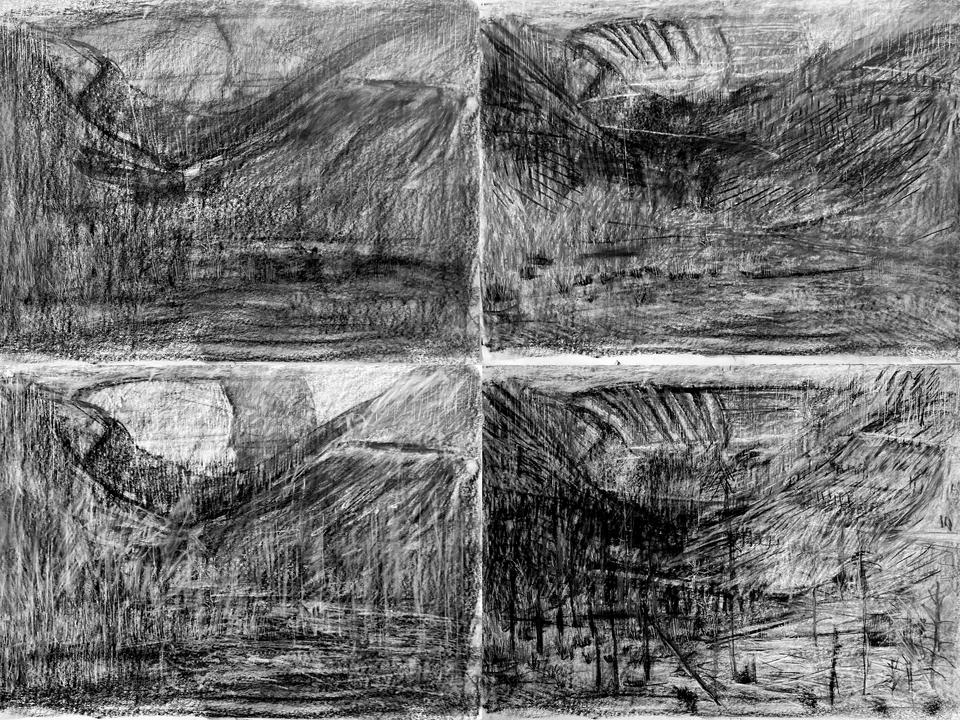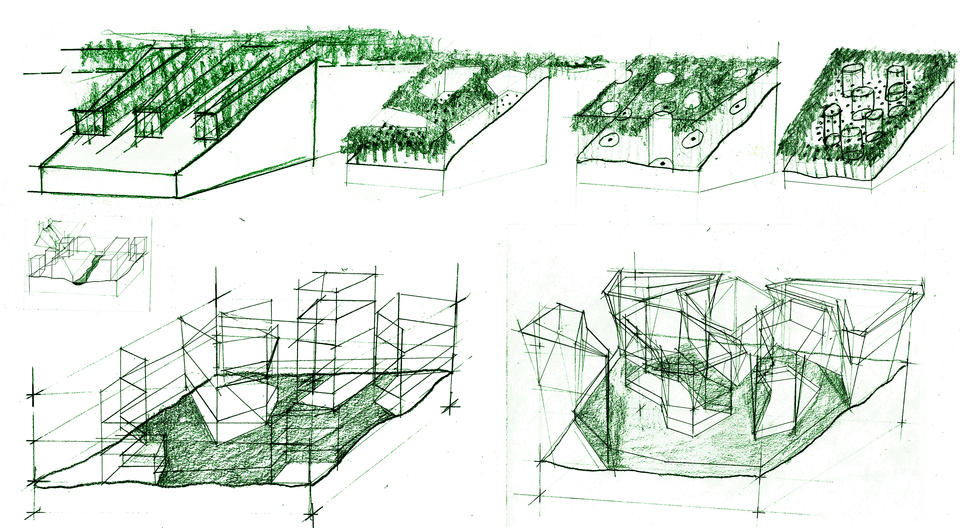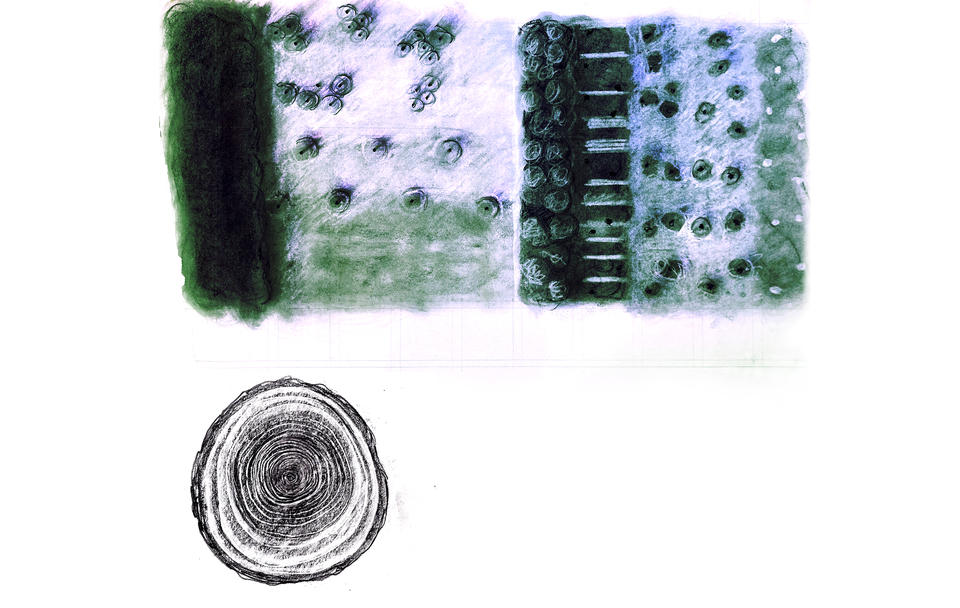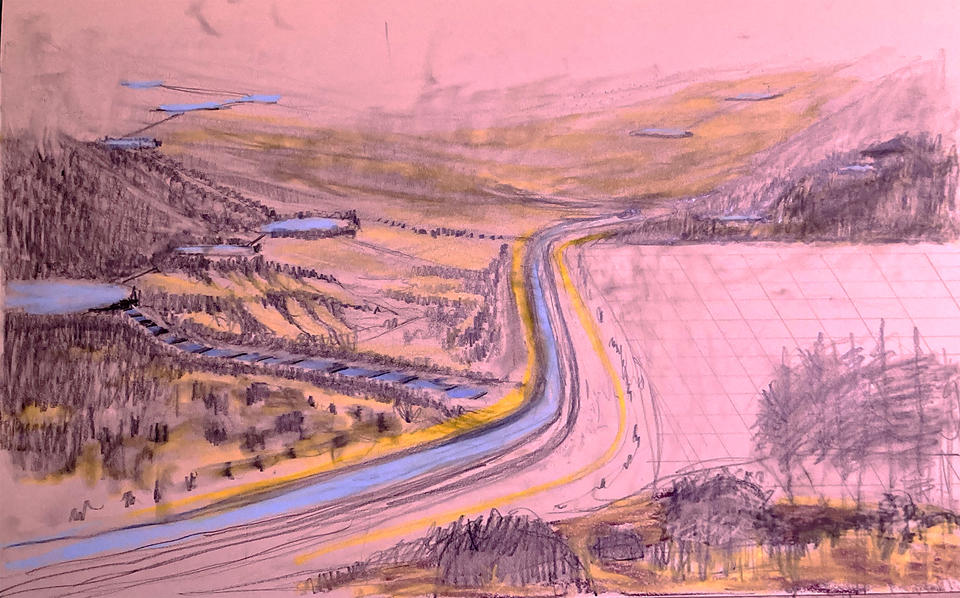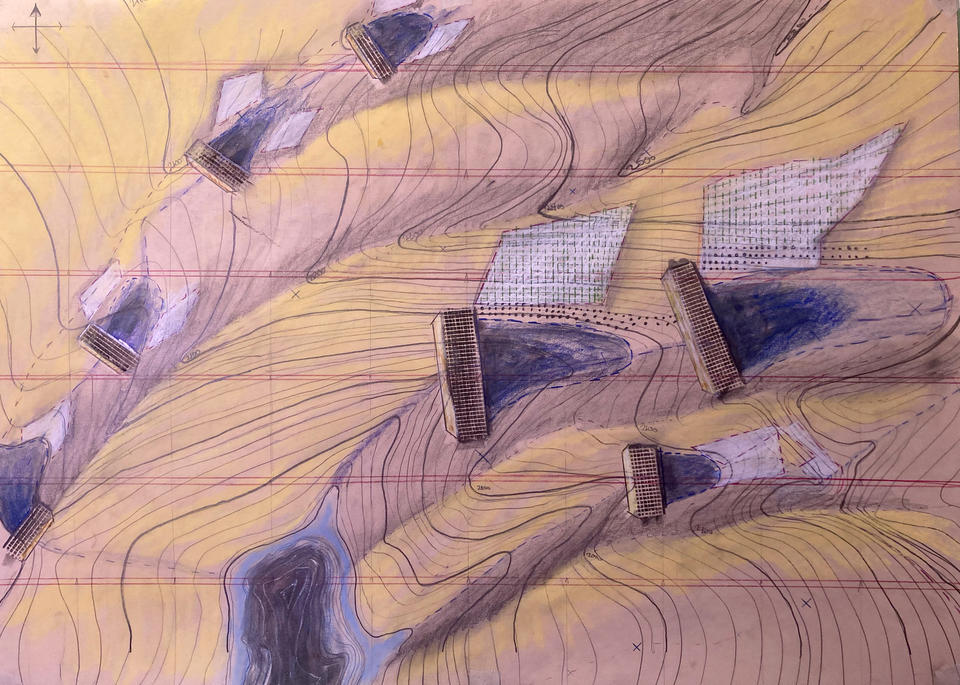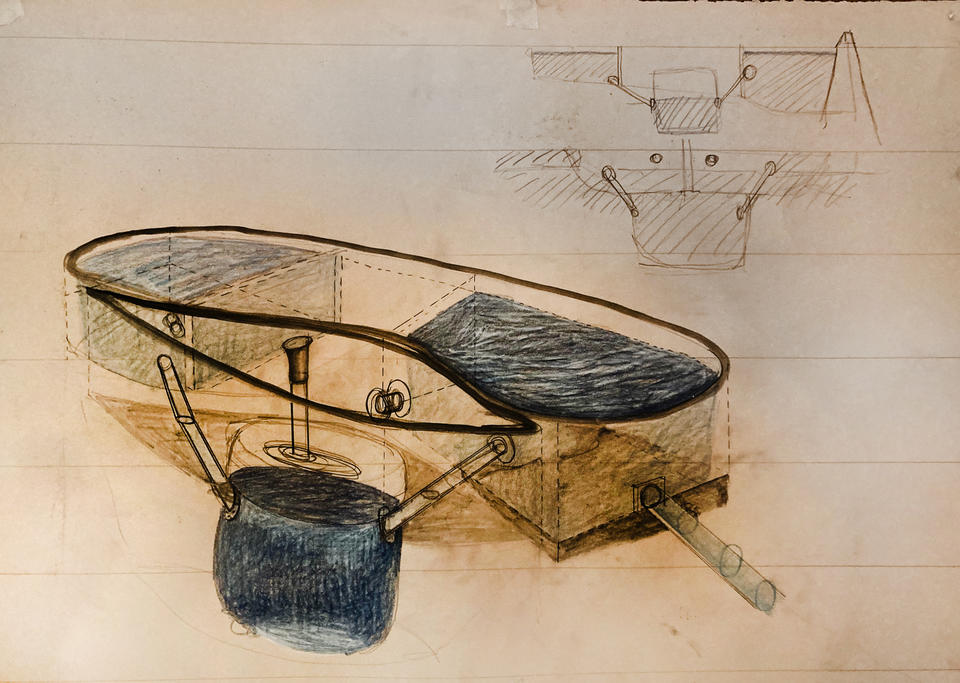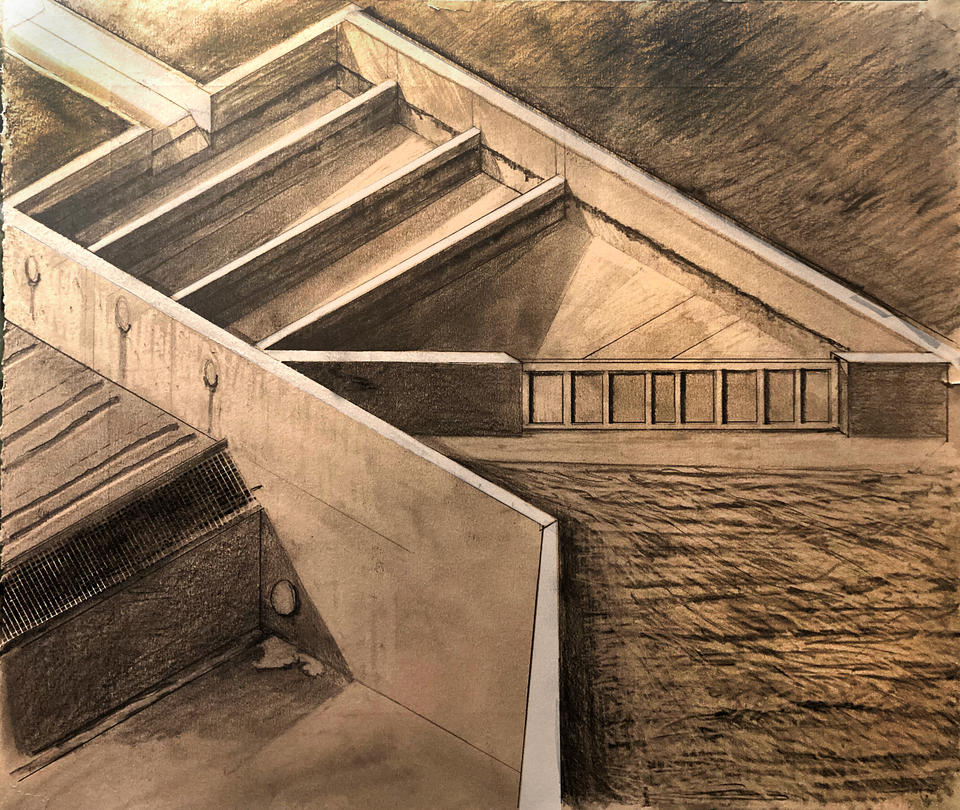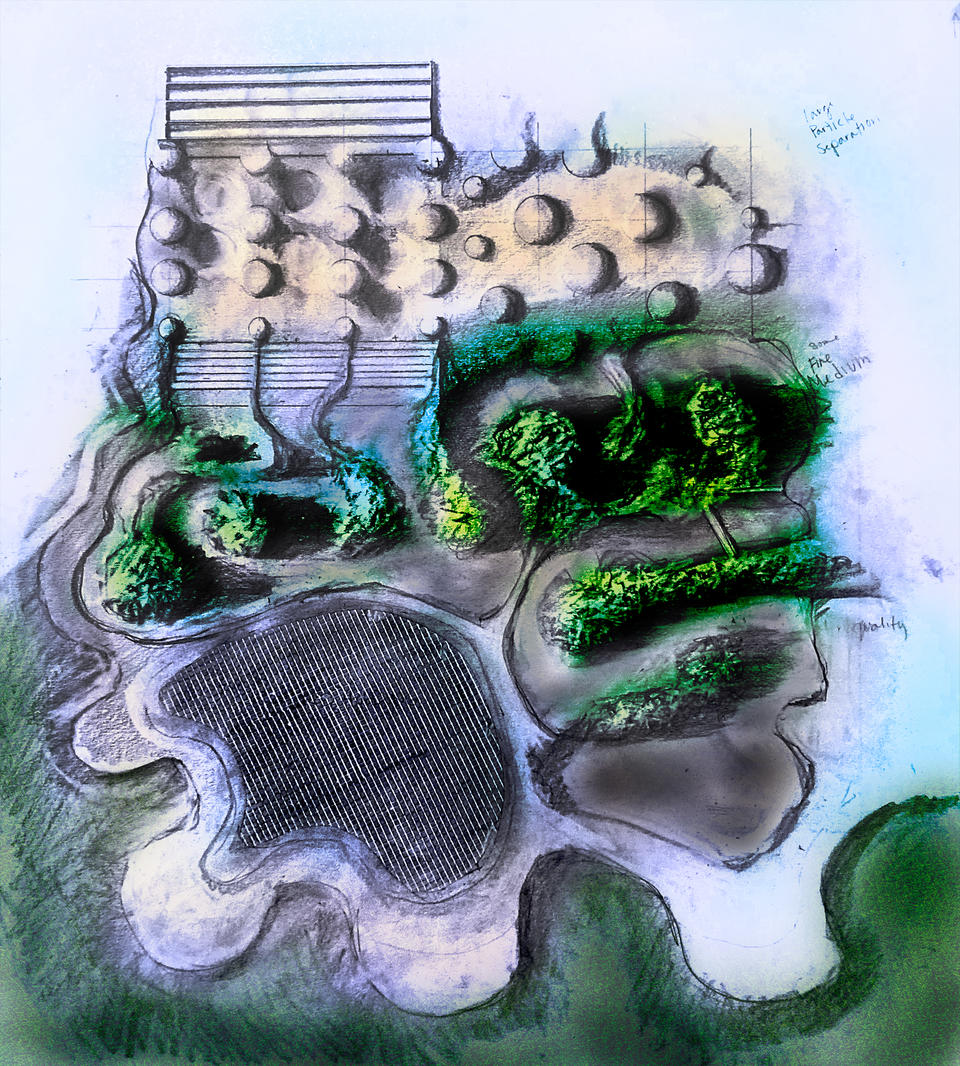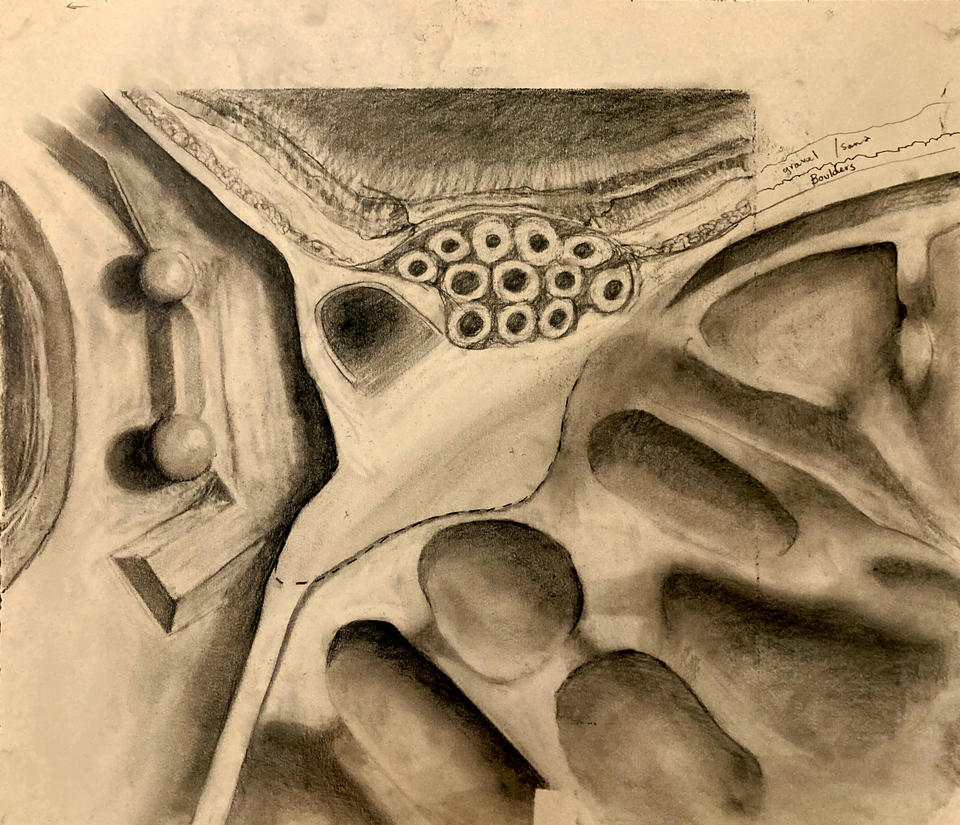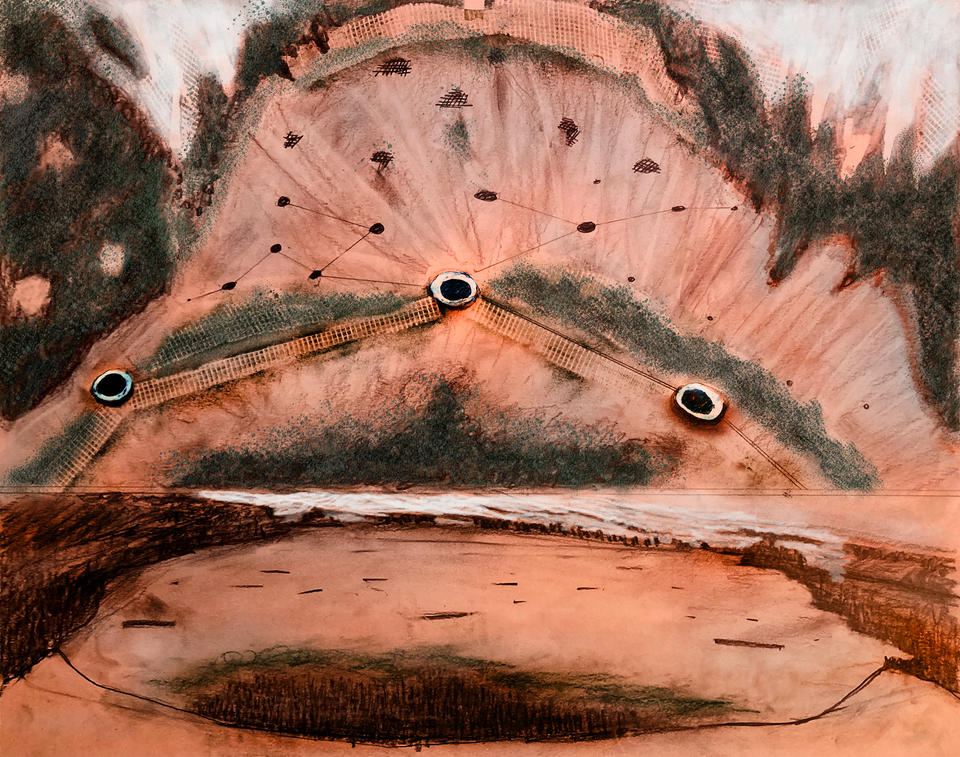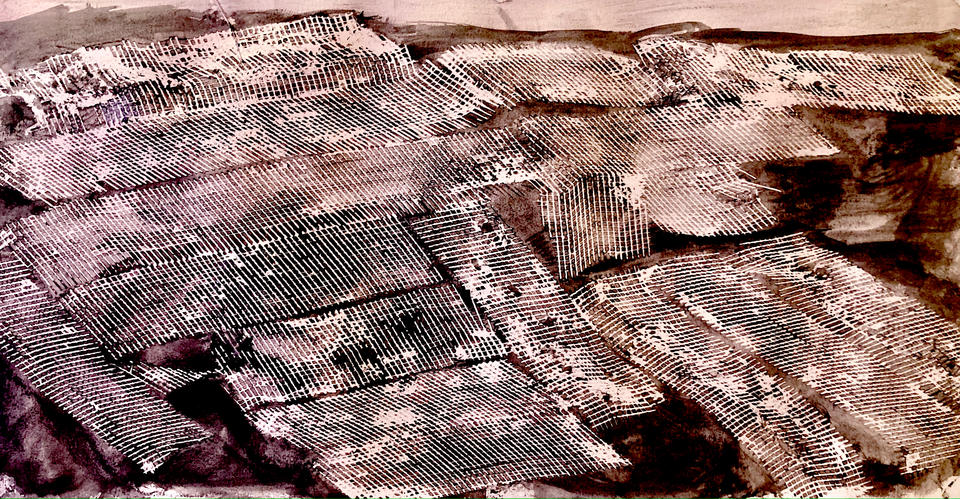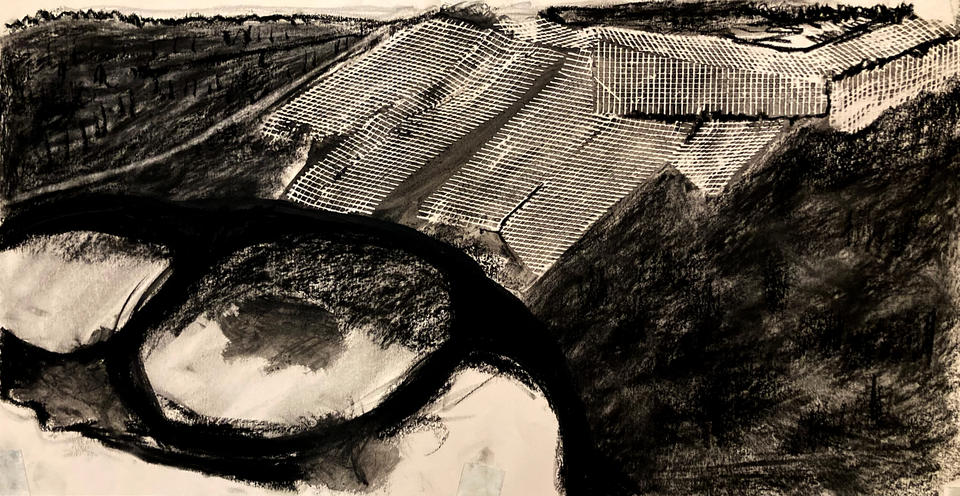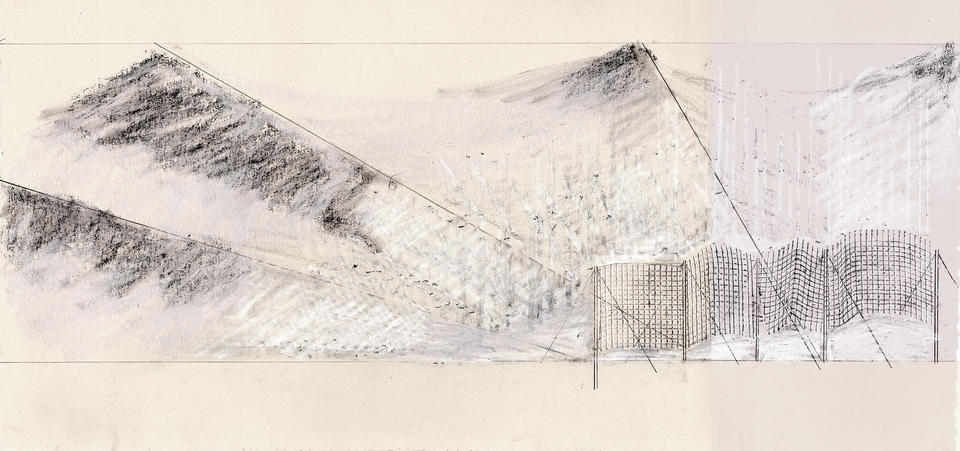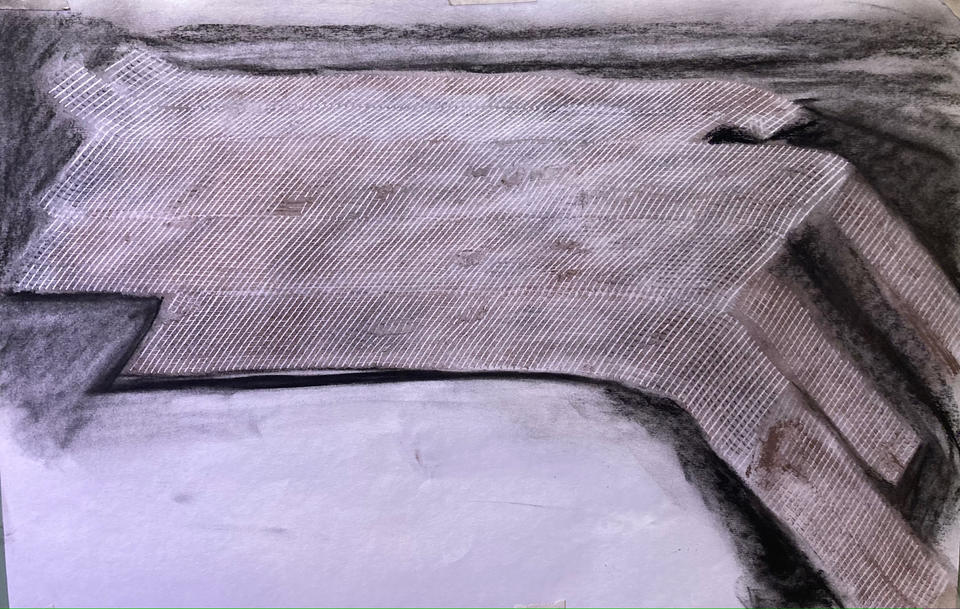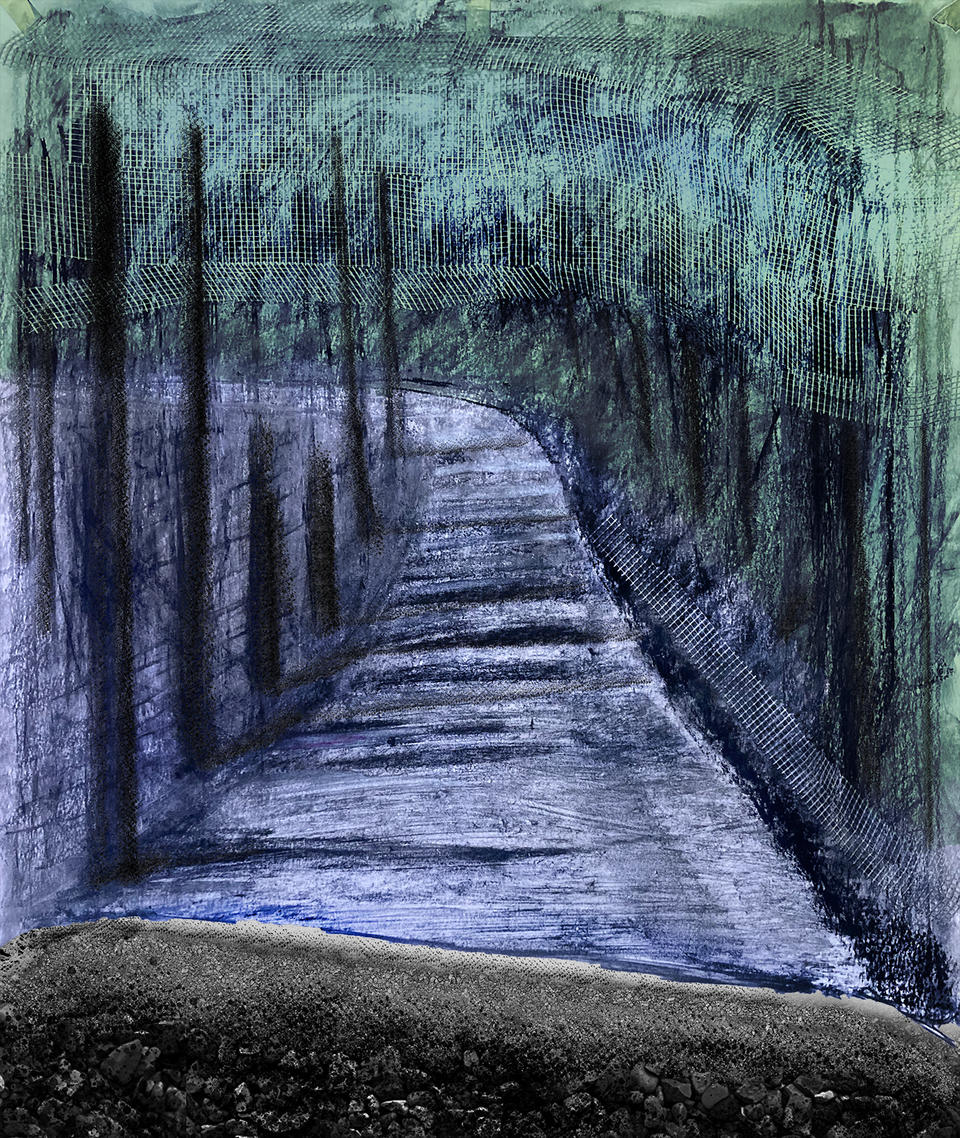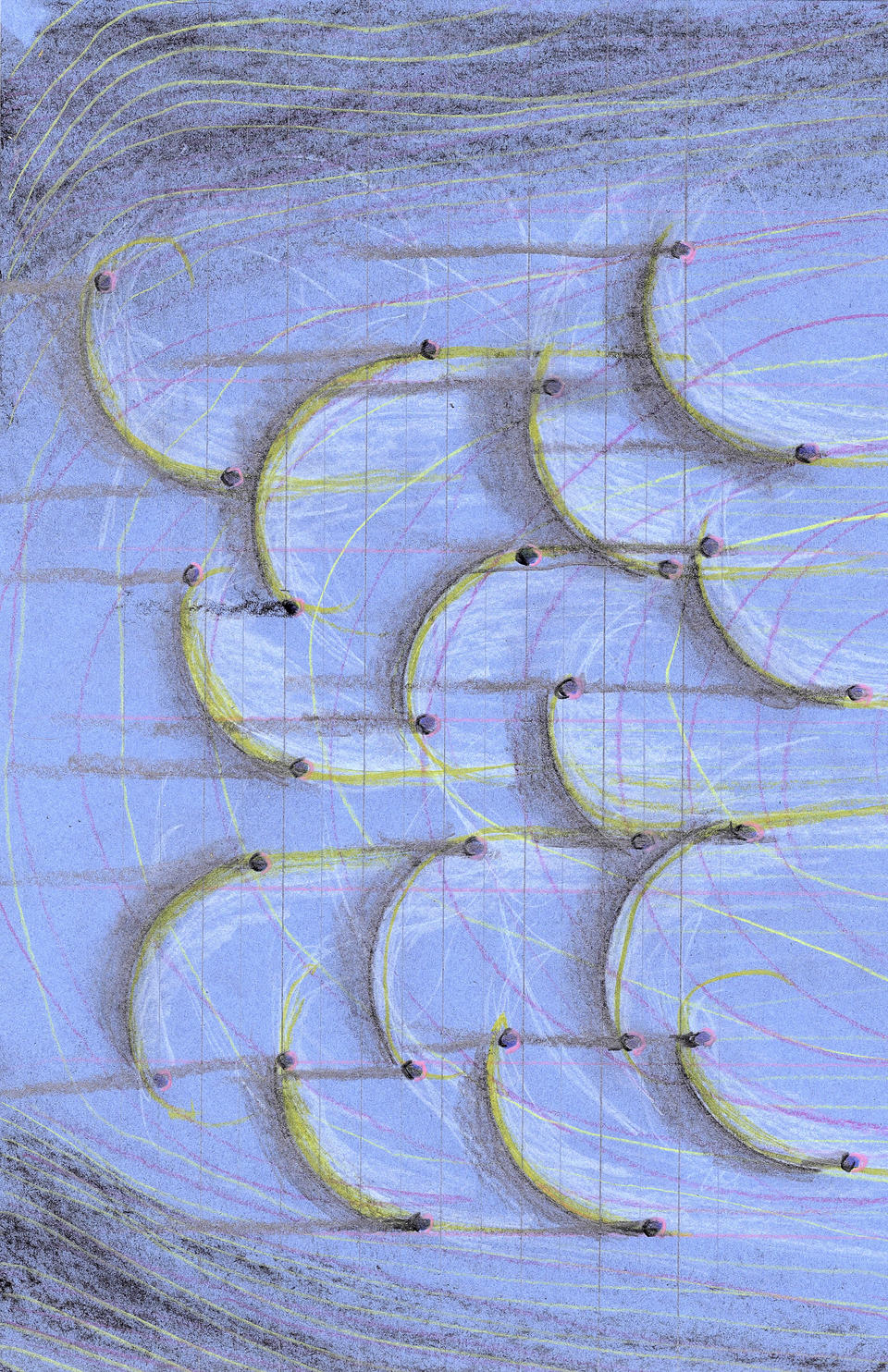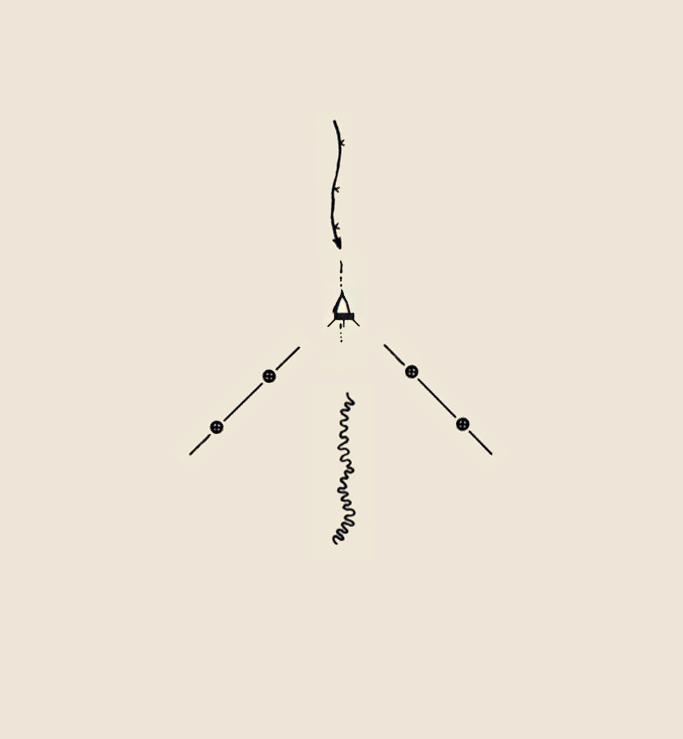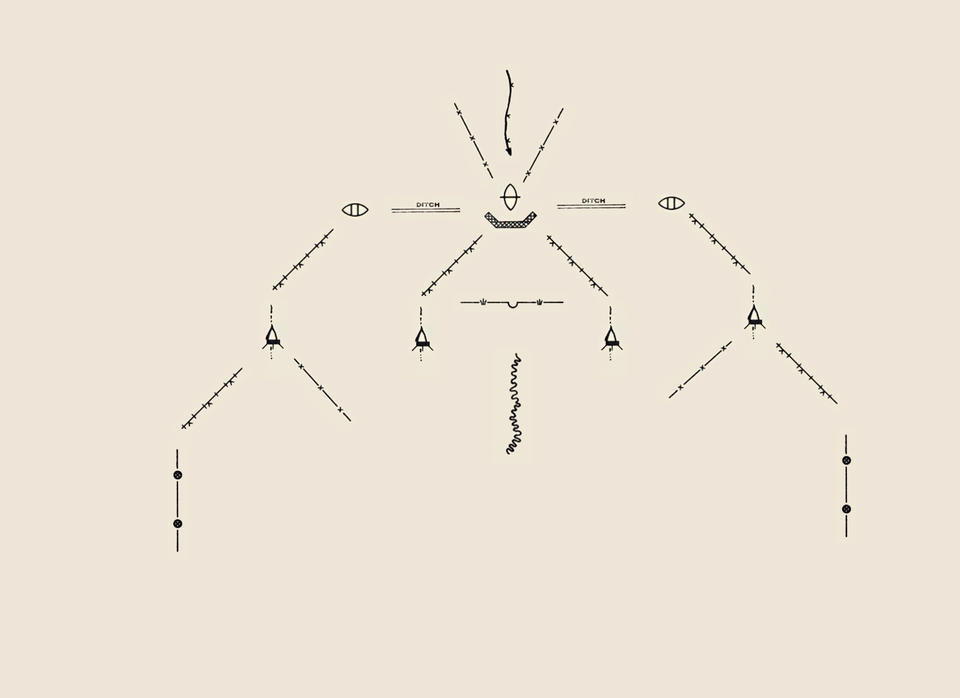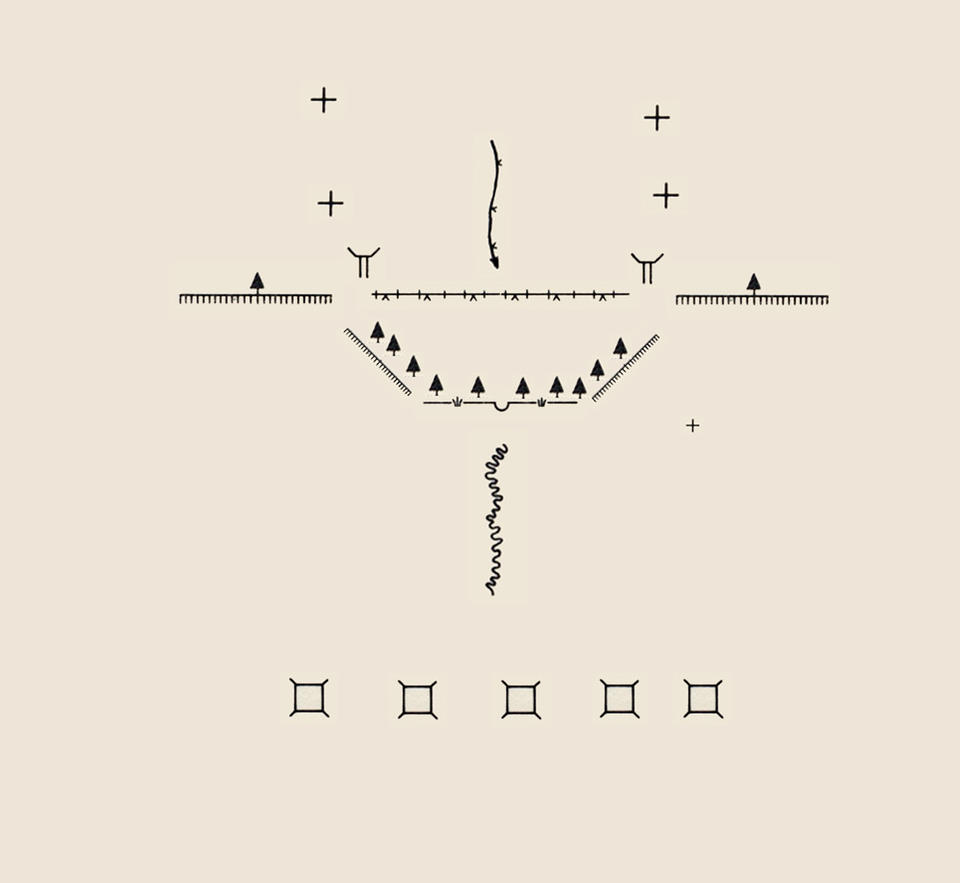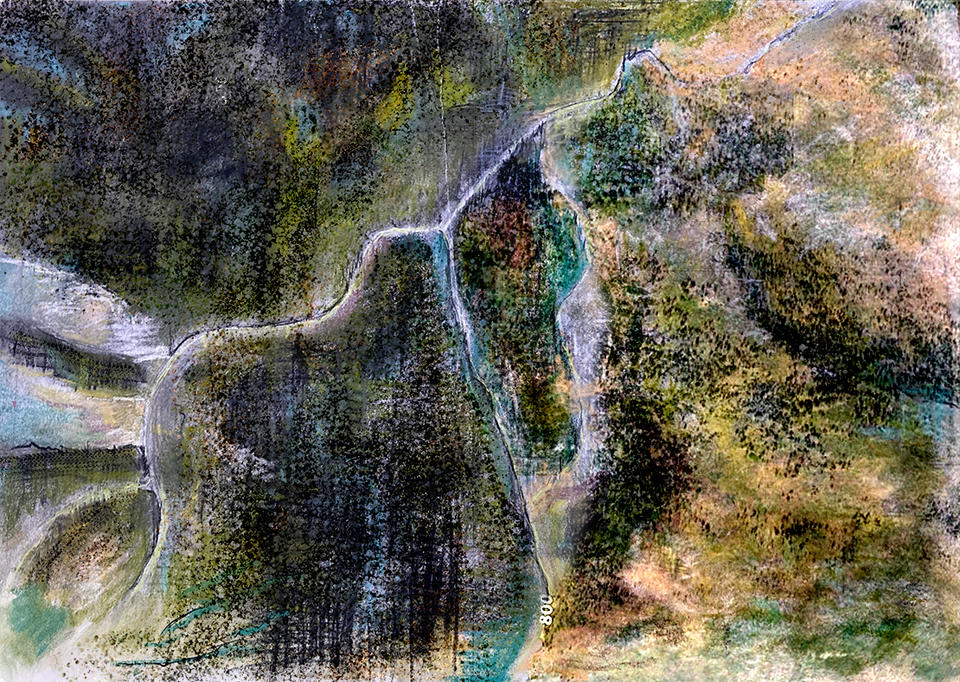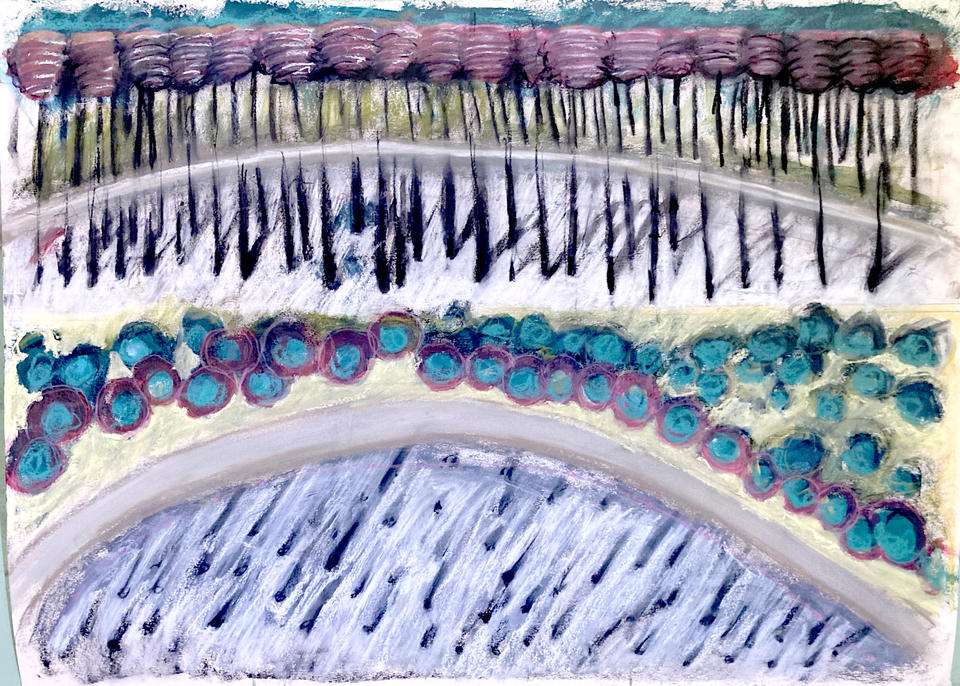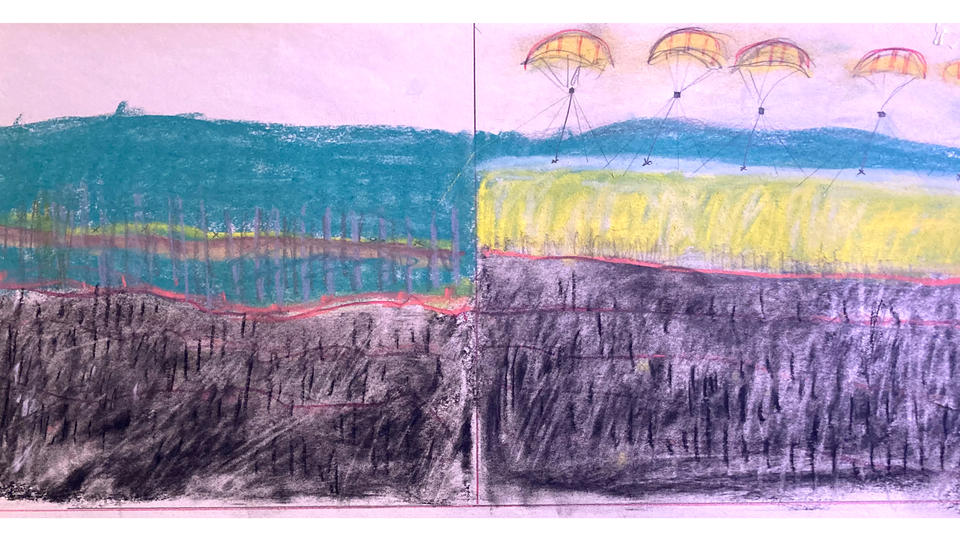ABSTRACT
This thesis proposes permanent and deployable infrastructure and devices for wildfire mitigation at different scales. Designed with consideration to the conditions in the western United States, but primarily Oregon.The primary approach to infrastructure is designing water retention systems for fire suppression and prevention. Some strategies are familiar and proven, while other proposals are new, but build off of existing practices. Interventions need to be site specific, so the types of proposals will vary in scale, location and timeline.The infrastructure should be adjustable, because the needs of a region may change periodically. Landscape systems take time to establish. Speculated infrastructure is meant for future stakeholders to modulate and adjust.
Oregon
Fire Management
Constrictions
Image
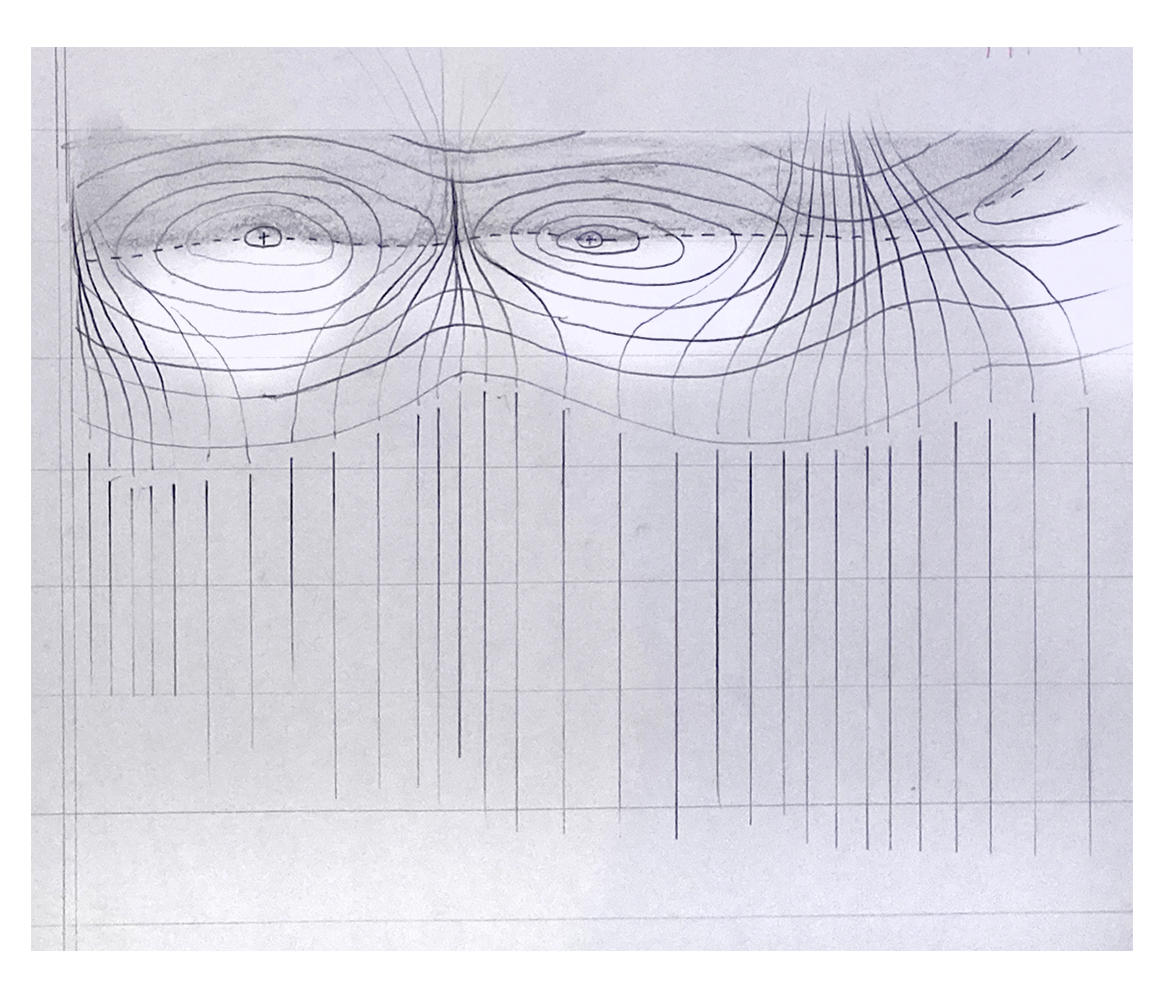
Canyon Effect
Image

An idea for reservoirs came up in response to the drastic difference in seasonal precipitation in Oregon. The strategy proposes new layers of function and utility for a familiar piece of infrastructure. A network of vessels that can hold water when it is abundant, and disperse water strategically to benefit the ecology, as well as protecting other culturally valuable infrastructure and resources.
Holding approaches a disturbance as an opportunity to re-engineer the landscape in some capacity, and also sees the inevitability of a disturbance as a reason to embed infrastructure in an attempt to minimize damage in the future.
Decentralized Network
A certain scale of reservoir could serve as a vital infrastructure for the future. Currently we are seeing snowfields retreat into higher elevations as average global temperature increases. This means that we have to prepare for different ways in which the land will adjust to having less frozen precipitation at higher elevations. So the logic of these reservoirs stems from a need to hold and distribute water in a way that extends the function of the wet season into the fire season.
Reservoirs can be sited in areas that naturally channel or collect water. Assuming that the reservoirs are open systems, northern aspect slopes would be able to hold water longer because they would be naturally shadier. Southern aspect slopes however are more prone to fire, and therefore should have this infrastructure also for fire mitigation.
Open water can serve as a firebreak, so these reservoirs should be designed to serve as a base for firefighters on the ground but also for wildlife. Smaller animals tend to hide or burrow in place, but larger animals that can travel distances easily will usually run for water in the event of a fire. A drawing on page 53 shows a concept for small bridges leading to a central island. Short shade tolerant trees that can be coppiced would be ideal. I think a spatial strategy that creates a series of rooms from coppicing would allow for more animals to feel safe congregating on the reservoir island. Also in the event of an emergency certain reservoirs would have a lock system that would allow for partial and systematic releases from the reservoirs to provide water to areas down slope. The irrigation system could transport water to closed home water tanks that firefighters and homeowners can utilize to protect property and neighborhoods. I also think water could be diverted into strategic distribution points for fire fighters.
After a fire the reservoirs can capture sediment from the first flushes off of a scorched slope. This helps mitigate the poor water quality that is associated with down stream conditions after wild fires. Another category of capture and remediation could be for the chemicals that the timber industry sprays over clear cut woodlands. A specific planting scheme for filtration would need to be designed.
Reservoirs have a lot of potential as vital infrastructure because of the multiplicity of issues that they could be designed for. If we look at the water supply system in New York City, there are hundreds of miles of aqueducts that connect a network of manmade reservoirs stretching north up the Hudson Valley. Entire towns and ecosystems were flooded to store clean water for a growing city. And over time these reservoirs blend back into their surroundings.
Distribution Concept Diagram
Image
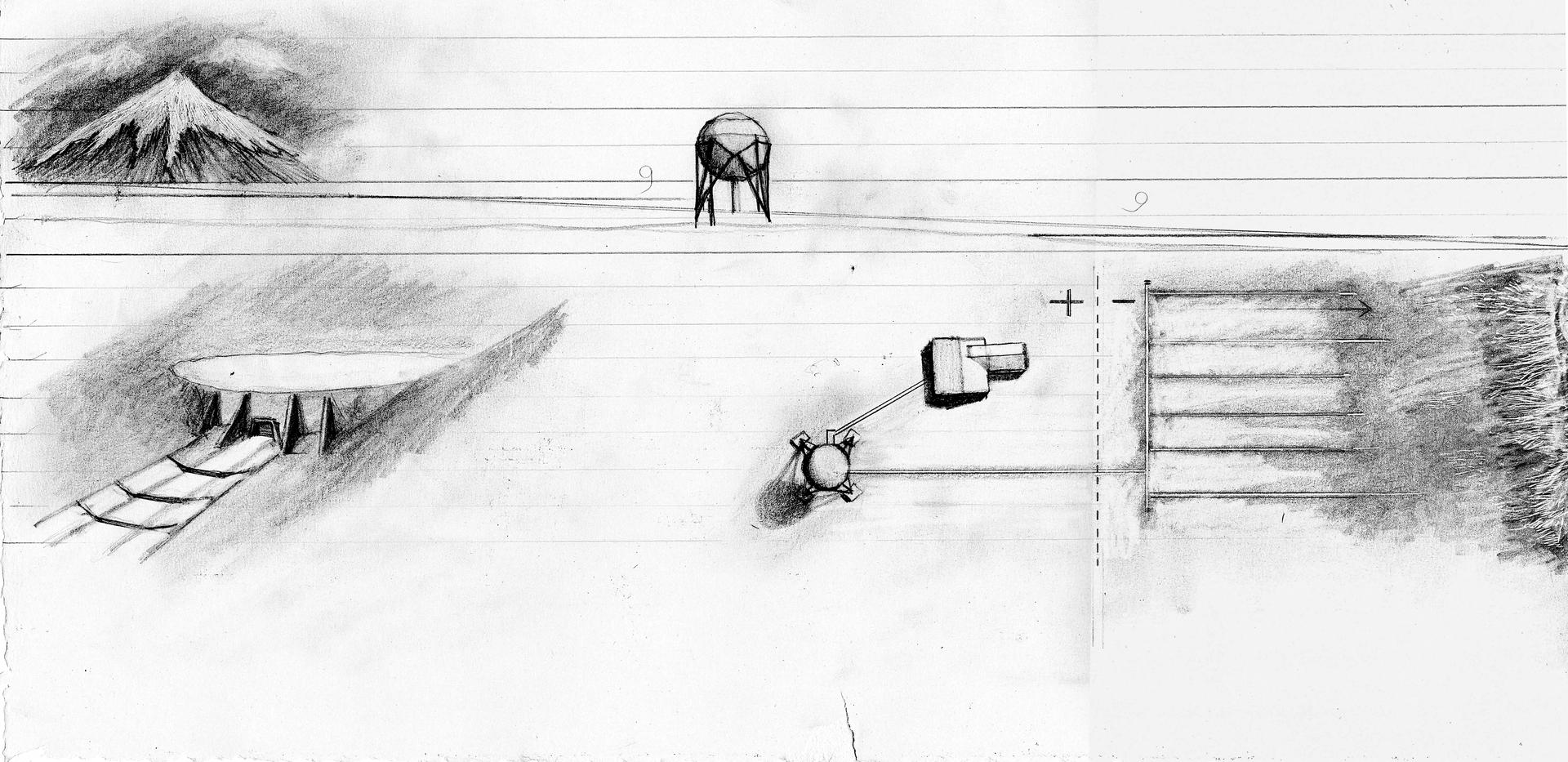
Water will be distributed from between vessels of different types and sizes. The starting point for collections systems will be downslope of peaks. Emphasis on collection will be in the spring time when there is extra melt water. This will help mitigate seasonal flooding. The endpoint of the collection networks will be decided by location. The holding tanks can be scaled down to a size that could be utilized at the home scale.
Reservoir as Systems
TEXTILES
System Diagrams
Textiles
Fabrics can be manufactured to be fire resistant. With certain qualities in material and form, meshes can improve the security of control lines, by extending them. They can cover flammable materials on the opposite side of a control line. Or they could be set up more permanently in high risk areas on fire evacuation routes. They would add some fire resistance to the roadway, and their deployment would signal that there is fire nearby or the risk is high.
Used fabrics can be repurposed for slope stabilization after a clearcut, or after a fire. Ground cover can help keep out invasive and unwanted plants from taking advantage of open ground after a disturbance.
Control Lines and Other Deployables

